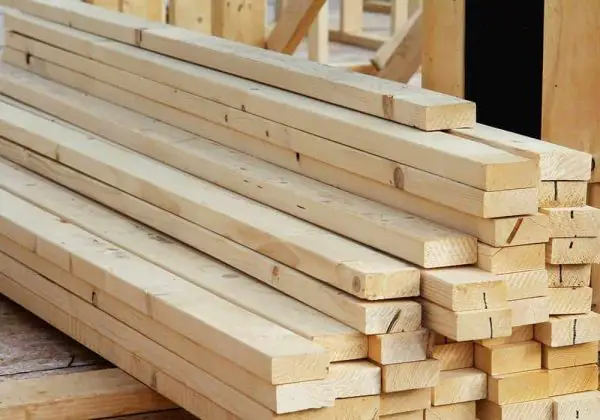The lumber weight calculator below will estimate the weight, specific gravity, and density of any species of wood.
To calculate other wood weights and volumes, check out:
-
- The log weight calculator to estimate green log weights by species and size
- The plywood weight calculator to estimate plywood weights
- The board foot calculator to estimate board feet (volume)
Just a heads up, this page contains affiliate links. If you buy through them I earn a small commission. If you chose to buy through these links I truly thank you for your support! – Jake
LUMBER WEIGHT CALCULATOR
*Most of the specific gravities used in this calculator are derived from “Wood Handbook, Wood as an Engineering Material” written by the U.S. Forest Service
How To Use This Calculator
First, select whether or not you have treated wood. Treated wood has chemicals (usually MCA or micronized copper azole) in it that will slightly increase the weight.
Standard treated wood has about 0.06 lbs/cubic foot chemical retention while wood treated for ground contact has about 0.15 lbs/cubic foot.
Next, select your species of wood.
Common Lumber Types

Wood used for furniture and for appearance is often of a hardwood (or Pine) variety. A few examples of these are shown in the picture above.

The most common species of dimensional building lumber (e.g. for framing a wall) is usually one of the following softwoods (also called whitewoods):
-
- Douglas-fir
- Douglas-fir-larch, which can either be Douglas-fir or western larch
- Hem-fir, which can either be western hemlock, California red fir, grand fir, noble fir, Pacific silver fir, or white fir
- Southern Yellow Pine (SYP), which can either be loblolly, longleaf, shortleaf, or slash pine
- Spruce-pine-fir (SPF), which can either be subalpine fir, balsam fir, black spruce, Engelmann spruce, jack pine, lodgepole pine, red spruce, or white spruce
You can usually find the species of wood by looking on the tag stapled to one of the ends.
If you choose pressure treated lumber, take note that 85% of pressure treated lumber sold in the US is southern yellow pine, so that is probably what you have.
Moisture Content and Lumber Weight
Wetter wood will be heavier than drier wood. Below are some typical moisture contents of lumber. Enter the moisture content in the calculator and hit “enter”.
-
- Untreated
- Fresh from store ~15%
- Wet ~30%
- Very dry ~5%
- Average equilibrium for interior wood in US ~8%
- Treated, fresh from store ~35-75%
- Untreated
Most building lumber sold at home stores is kiln dried to some extent. This means that it has to have a moisture content below 19%. This is denoted by a KD-19 tag.
KD-19 (Kiln Dried 19%) lumber will have an average moisture content somewhere around 15%.
Other more stringent kiln-dried standards exist but KD-19 is the most common.
If you want to test for moisture content before you buy, pick up a moisture meter. They are great little tools and aren’t too expensive. This is the moisture meter I use almost on a daily basis. It’s also great to test firewood for proper seasoning.
Finally, be sure to take note that fresh, treated wood will probably have a higher moisture content (35%-75%). This is due to the fact that water is used to impregnate the chemicals into the wood at the factory. This is important to remember when building a wood fence, for example, so that future shrinkage can be taken into consideration.


